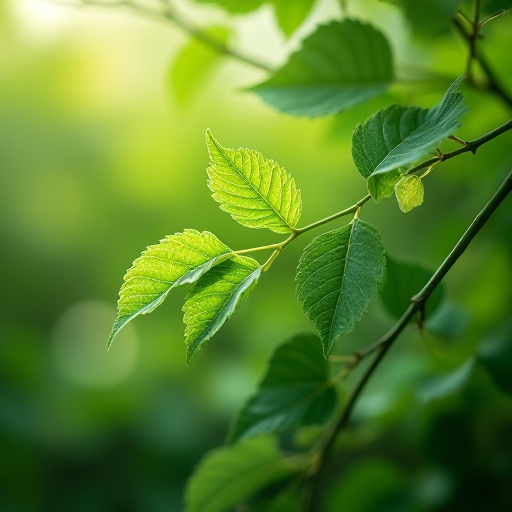
Why Do Leaves Rustle in the Breeze?
The gentle rustling of leaves in a breeze is a familiar and soothing sound often associated with tranquility and the beauty of nature. While this phenomenon might seem simple, it is the result of a fascinating interplay of physical forces and biological structures. This article delves into the science behind why leaves rustle in the breeze, exploring the physics, biology, and even the ecological significance of this common occurrence.
The Physics Behind the Rustle
Movement and Sound Production
The rustling sound is primarily a result of the movement of leaves. When wind passes through a tree, it causes the leaves to move. This movement leads to collisions between leaves, stems, and branches, which in turn produces sound waves that we perceive as rustling. The sound is a form of mechanical energy that results from the transfer of kinetic energy from the wind to the leaves.
Leaf Structure and Sound Variation
The specific sound produced by rustling leaves depends on several factors related to the leaves' structure:
- Size and Shape: Large leaves tend to produce deeper and more pronounced sounds, while smaller leaves might produce a softer, higher-pitched rustle. The shape of a leaf can also influence how it moves in the wind, affecting the sound.
- Thickness and Flexibility: Thicker, more rigid leaves might produce a crisper sound, whereas thin, flexible leaves might create a softer rustle. The flexibility allows for more vibration and contact with other leaves, resulting in varied sound frequencies.
- Surface Texture: The texture of the leaf surface, such as hairiness or waxiness, can affect the sound. Rough surfaces might create a more complex sound compared to smooth surfaces.
The Role of Wind Dynamics
Wind Speed and Direction
The intensity of the rustling is directly related to the speed and direction of the wind. Gentle breezes might cause a soft murmur, while stronger winds can lead to a louder, more chaotic rustling as leaves and branches move more vigorously. The direction of the wind can also influence which parts of the tree are most active, affecting the overall sound.
Turbulence
Wind is rarely a steady, uniform flow. Instead, it often contains eddies and gusts that create turbulent airflows. This turbulence increases the variability in the movement of leaves, leading to a richer and more varied soundscape as leaves are jostled unpredictably.
Biological and Ecological Considerations
Leaf Adaptations
Over evolutionary time scales, leaves have developed various adaptations to optimize their interaction with wind. Some plants have leaves that are specifically designed to minimize damage from wind, while others might have leaves that maximize movement to facilitate processes such as seed dispersal or to create microhabitats.
Ecological Significance
The rustling of leaves can have ecological implications as well. It might serve as a cue for animals, signaling the presence of wind or potential changes in weather. For some species, the rustling may play a role in communication, either as a signal of disturbance or as a part of mating rituals.
The Human Connection
Cultural and Psychological Impact
The sound of rustling leaves has been a source of inspiration in literature, music, and art. It often symbolizes change, passage, and the continuity of nature. Psychologically, the sound is associated with relaxation and can have a calming effect, which is why it is often included in soundscapes for meditation and stress relief.
Importance in Environmental Monitoring
Interestingly, the rustling of leaves can also be an indicator of environmental conditions. Changes in the frequency or intensity of leaf rustling might signal changes in wind patterns, climate, or even the health of a forest ecosystem.
Conclusion
The rustling of leaves in the breeze is a multifaceted phenomenon, combining elements of physics, biology, and ecology. It serves as a reminder of the intricate connections between living organisms and their environment, as well as the beauty that can arise from these interactions. Whether heard as a gentle whisper or a vigorous chorus, the sound of rustling leaves connects us to the natural world and underscores the dynamic nature of our surroundings.
